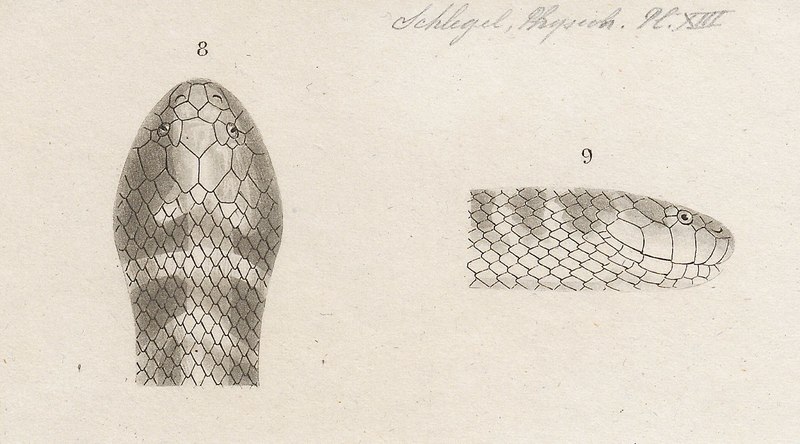Homalopsis leucobalia = crab-eating water snake (Fordonia leucobalia) Homalopsis leucobalia - kop
Date 1837
Notes This object is part of the collection Iconographia Zoologica
Source/Photographer Schlegel, H. Essai sur la Physionomie des Serpens. Planches, Cartes et Tableaux. La Haye. J.Kips, J.HZ. et W.P. van Stockum, 1837. Pl. XIII, no. 8,9. (signatuur: 102:6 / 102:7)
Author Hermann Schlegel
Old Latin name Homalopsis leucobalia
New Latin name Fordonia leucobalia
Common name Nederlands: Waterdrogadder
Source: https://commons.wikimedia.org/wiki/File%3AHomalopsis_leucobalia_-_kop_-_1837_-_Print_-_Iconographia_Zoologica_-_Special_Collections_University_of_Amsterdam_-_UBA01_IZ12000195_%28cropped%29.tif
[[ Homalopsis leucobalia = crab-eating water snake (Fordonia leucobalia) ]]
The crab-eating water snake or white-bellied mangrove snake (Fordonia leucobalia) is an aquatic snake of family Homalopsidae. It is a common resident of mangrove swamps and tropical tidal wetlands from coast of Southeast Asia to Indonesia and the coasts of Northern Australia. The anatomy reflects the snake's water-living lifestyle: the eyes are located atop the head, and the nostrils have valves that close when the snake dives. The crab-eating water snake eats small prey that live in its habitat, such as frogs and small fish, and it specializes in crabs, hence its name. Like other homalopsines, Fordonia leucobalia bears live young.
Order: Squamata
Suborder: Serpentes
Family: Homalopsidae
Genus: Fordonia
Species: Fordonia leucobalia (Schlegel, 1837)
